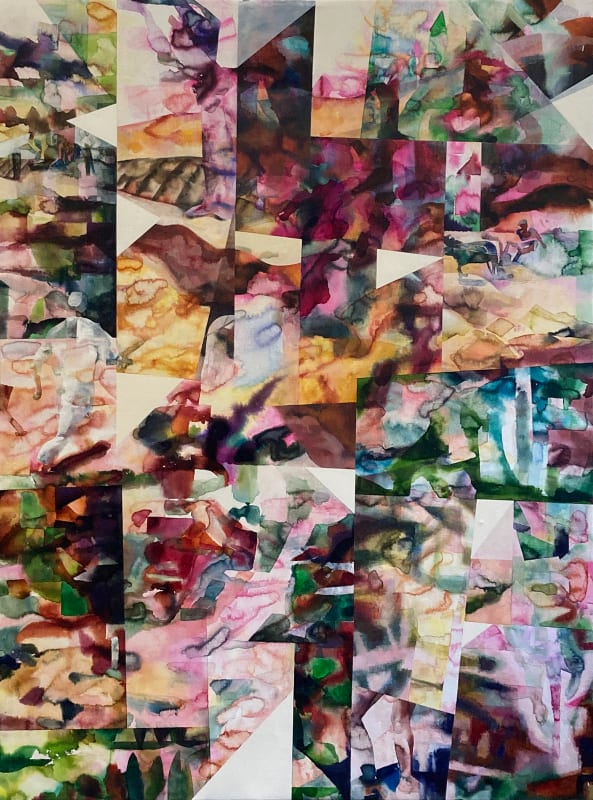Galerie Nathalie Obadia is delighted to present Éclats, Carole Benzaken's tenth solo exhibition since their collaboration began in 1993. This exhibition brings together a previously unseen selection of paintings and drawings on laminated glass, in line with her ongoing research into image and representation. For over thirty years, the artist has chosen a resolutely "modern" approach: she invents solutions involving a renewal of the timeless medium of painting, oscillating between figuration and abstraction, erasure and unveiling of images.
Looking at the exhibited works - which could be described as abstract, imbued with intense vitality and chromatism - we are surprised to learn that Carole Benzaken's early years were marked by figurative imagery. After studying at the École Nationale Supérieure des Beaux-Arts de Paris, from 1985 to 1990, she began her career painting colorful, frontally arranged tulips, covering each canvas with their petals. At a time when conceptual art dominated the international art scene, the artist was already taking a bold stance by choosing as her subject an image in its simplest signifier. Despite her early success and wanting to avoid being "put in a box", the artist decided to abandon this highly codified motif in favor of what would become the essential vector of her practice: a quest for a free painting style, one that she likes to call "nomadic", entailing constant technical (India ink, acrylic, pencil, oil) and stylistic shifts.
Carole Benzaken first experienced this mobility by broadening her geographical horizons: she went to live in the United States, in Los Angeles, for seven years. "Over there, everything was wide open. There was no hierarchy between different mediums," she said. Since then, the artist has sought to surpass representation in painting by questioning its limits. She collects a wealth of images, which she interprets and juxtaposes in subtle compositions. In a close relationship between earth and flesh, the artist - who paints on the ground - digs into the image, looks for the crack, explores the surface and depth to create geometrical impacts. All chromatic ranges merge in this optical vacillation, the bodies, the places, "landscape being a type of flesh, a space made of fluid interplay and structuring geometries," declares the artist. A pictorial earthquake thus emerges from the fragmented landscape.
Carole Benzaken's œuvre follows in the footsteps of "les modernes", playing as much with folk art as with the deconstruction of representations, by questioning the very materiality of painting. While they are sometimes distant in their compositions, each work exhibited has the characteristic of containing "all this, all at once". These internal movements also extend beyond the pictorial field, the viewer's eye bouncing from one painting to the next between different worlds, from the most abstract to the most representative. Visual echoes circulate from one work to another within the exhibition space, like particularly vital music, offering no respite.
Each composition asserts itself as it slips away in a complex woven interplay, like a recomposed mosaic crafted from broken mirror fragments. In these Éclats made of light and geometry, she gives us both the skin and the skeleton of a plural world, between elusive mobility and depth: the vibration of the present.

